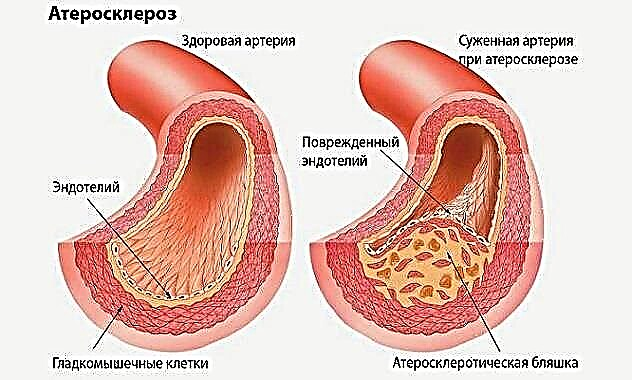Every year more and more people use homeopathic remedies in their treatment. The German physician Samuel Geneman became the father of the new teaching in 1796. Homeopathy (illness, suffering) is a soft medicine based on two principles: like cures like. That is, while taking a homeopathic remedy, a person develops symptoms similar to the manifestations of the disease. The second principle is to use micro-doses of a substance so that it has a therapeutic effect. There is no unequivocal attitude towards this science, especially among doctors. Some consider it quack, others - a panacea. How are things in reality?
The influence of homeopathic remedies on the body
According to numerous trials, homeopathy does work.
Double-blind studies were conducted in which neither the specialist nor the patient knew that the latter was taking. This is done to eliminate the placebo effect. The result of the treatment was positive. In addition, the experiments involved pets that do not respond to either suggestion or self-hypnosis regarding the drugs they are taking. And in this case, homeopathy worked.
Some experts prescribe homeopathic remedies even for babies.
The main differences between traditional medicine and homeopathy:
- traditional medicine treats the disease, soft medicine treats the patient;
- a homeopathic specialist interrogates the patient in detail for two to three hours, finding out not only the complaints and symptoms of the disease, but also the character of the person, his lifestyle, habits. This is the only way to understand the nature of the disease and choose the right treatment;
- traditional medicines not only eliminate the symptoms, but also affect the entire organ, the entire system and even the entire body, causing a lot of side effects, which then also have to be treated. Sometimes, the treatment for side effects takes longer and is more expensive than treating the underlying condition. Homeopathic remedies do not violate the functionality of organs and systems. They act softly, delicately, therefore, they are safe for health. These preparations do not contain aggressive chemicals, but only natural ones. They work at the energy-informational level, and not at the physical one.
Homeopathy differs from herbal medicine in the concentration of the main substance in the preparation and in the principles of prescription
Classification
 today there are medicines prepared in pharmacies using classical technologies;
today there are medicines prepared in pharmacies using classical technologies;- high dilution preparations;
- phyto-homeopathic remedies combine a high concentration of some substances and a high dilution of other ingredients;
- homotoxicological agents (nosodes) resemble a vaccine. For their manufacture, substances and elements obtained from diseased organs or from the secretions of a sick person or animal are used. These substances are detoxified in a special way, after which they become safe for humans.
Composition and indications
What the drugs are made of
- Sore throat is treated with preparations consisting of herbal ingredients with anti-inflammatory, anti-allergic, analgesic effect.
- The medicines include mineral trace elements: gold, mercury, limestone, lead, platinum, graphite, silica. It is the similarity of the physical and chemical characteristics of trace elements of one group and a subgroup that determines their therapeutic effect on the body.
- Animal hoods are taken from different animals. Waste products and animal diseases, poisonous substances are also used.
Indications
- infectious diseases of the nasopharynx (pharyngitis, tonsillitis, laryngitis, sinusitis);
- asthma, adenoids;
- allergic reactions;
- depressive conditions;
- sleep disturbance;
- migraine, neuralgia, myalgia;
- flatulence, reflux, inflammation of the gallbladder and liver;
- deforming pathologies of the spine and joints;
- premenstrual syndrome, menopause, inflammation of the female genital organs;
- adenoma, inflammation of the prostate.
Advantages
- the possibility of prescribing to pregnant women, children under one year old, the elderly;
- the possibility of taking it with contraindications or intolerance to traditional medicines;
- ease of use: granules are not washed down like ordinary tablets, sweetish granules are easily consumed by small children;
- impossibility of overdose, lack of addiction;
- safety and lack of side effects due to the low content of the active ingredient.
In homeopathic treatment, do not use alcoholic beverages, mint, do not use camphor.
Choosing and taking homeopathic remedies
- when choosing a medicine in homeopathy, they are guided by symptoms and sensations;
 the reception is stopped after the symptoms have been removed, the reception is resumed in the event of the return of the symptoms;
the reception is stopped after the symptoms have been removed, the reception is resumed in the event of the return of the symptoms;- in the acute phase of the disease, the effect of taking homeopathic medicines should occur within the first day. In the absence of a result, further treatment with these drugs is inappropriate;
- for half an hour before taking medications and half an hour after taking, you can not eat or drink anything;
- do not store medicines near electrical appliances;
- it is not allowed to drink a pill that has fallen on the floor. In homeopathy, tablets, or rather grains, are called "globules". Their size does not exceed two millimeters. Sugar is used for manufacturing.
Potentiation
There is such a thing as the potency of a homeopathic remedy. Potentiation is a method of making drugs. The method consists in dilution and shaking in a special way using a machine (dynamization). The main substance is diluted with alcohol or water 1:10 (D-dilution), 1: 100 (C-dilution), 1: 50,000, there are also millionth dilutions (LM). Dilution and shaking occurs in stages.
Potency (dilution rate) in numbers is recorded next to the name of the medicine. For the throat, drugs are prescribed with one of the potency values: 3X, 6X, 30CH. Grains 3X and 6X are placed under the tongue every hour, 3 pieces. 30СН granules are diluted with water. Put 3 pieces in 100ml of water, stir, drink 15ml every two hours.
Choice of funds
When choosing homeopathic medicines, you need to focus on the manufacturer, give preference to domestic or European well-known firms. Well-known manufacturers care about their reputation, so their medicines are tested for safety and efficacy and are manufactured under strict control.
One-Piece Formulas are made according to a specialist prescription for each patient separately. Multi-component products are commercially available and can be dispensed without a prescription. Homeopathic preparations are produced in granules, solutions for oral administration, for rinsing and compresses, in ointments, oils.
Remedies for sore throat
The homeopathic drug Aconit is used at the onset of the disease with the following symptoms:
- hyperemia of the mucous membrane of the throat and tonsils, burning;
- a sharp onset of the disease against the background of hypothermia;
- fever, intense thirst, desire to drink cold water.
Argentum:
- hoarseness, loss of voice, not only with a sore throat, but also as a result of professional activities (singers, lecturers);
- stabbing pain;
- benign formations on the mucous membrane (papilloma, wart, ulcer).
Belladonna is the main treatment for throat in young children:
- acute purulent right-sided tonsillitis;
- fever in which the head is hot and the hands and feet are cold;
- light intolerance.
Apis:
- sore throat that subsides with cold drinks and worse with warm drinks;
- severe swelling of the uvula;
- a stabbing sore throat, radiating to the ears;
- swelling, enlargement, soreness of the glands;
- the patient is not thirsty;
- the patient does not tolerate heat.
Arsenicum:
 a burning sore throat that subsides from warm drinks;
a burning sore throat that subsides from warm drinks;- difficulty eating;
- ulcers on the mucous membrane of the oropharynx.
Barita muriaticum:
- soreness of the glands and throat in acute and chronic tonsillitis, subsiding from a cold drink;
- an increase in the submandibular and cervical lymph nodes;
- a lump in the throat making it difficult to swallow.
Ferrum phosphoricum:
- sore and swollen throat in the morning;
- difficulty swallowing;
- purulent plaque more on the right;
- rosy cheeks against the pale skin of the rest of the face.
Hepar sulfar:
- stitching pains radiating to the ear;
- suppuration of the tonsils.
Lachesis:
- left-sided pain radiating to the ear;
- severe sensitivity to touch.
Phytolacca:
- burning pain;
- white or yellow bloom;
- intoxication;
- red, inflamed oropharynx.
Lycopodium:
- pain starts on the right, moves to the left side;
- pain is relieved after drinking.
Despite the safety of homeopathic remedies, it is better if they are prescribed by the attending physician after diagnosis.

 According to numerous trials, homeopathy does work.
According to numerous trials, homeopathy does work. today there are medicines prepared in pharmacies using classical technologies;
today there are medicines prepared in pharmacies using classical technologies; the reception is stopped after the symptoms have been removed, the reception is resumed in the event of the return of the symptoms;
the reception is stopped after the symptoms have been removed, the reception is resumed in the event of the return of the symptoms; a burning sore throat that subsides from warm drinks;
a burning sore throat that subsides from warm drinks;

